Review: Workspace Design Show
The Workspace Design Show took place on Thursday 4th and Friday 5th November 2021 at the Business Design Centre, London. The UK’s only exhibition focused purely on workspace design, the event promised the latest thought leadership from the country’s top architects, designers & corporates.
I travelled to this new event wondering what it would bring to the workplace sector and questioning what I wanted to be able to take away from the event. Would it deliver something new? Did it need to? I left the event with greater knowledge, having met with industry friends in person and having discovered new designs. To me it was certainly a success!
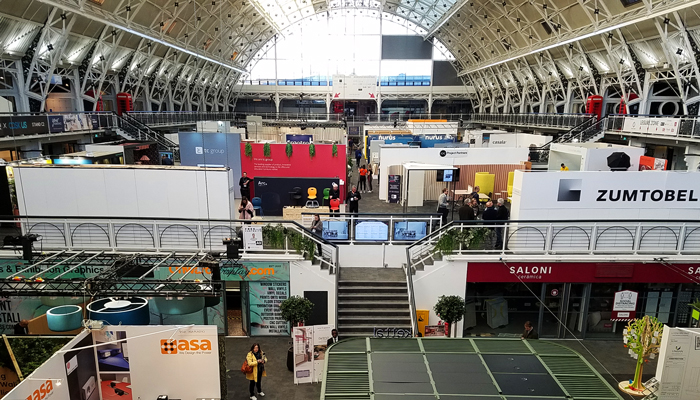
The Workspace Design Show was my first post-Covid exhibition and immediately on arrival at the Business Design Centre to was clear that I was not the only person in our sector who was pleased to have the opportunity to be an in-person part of our sector’s thriving community.
‘It’s great. It’s great to be out and seeing new products, you know, as we just said, in the talk, there’s lots of emphasis on acoustics. It’s great seeing people again, though, and there’s a real appetite for this, and as you know it’s Friday, and it’s really busy in here.’ Gill Parker, CEO, BDG Architecture + Design
The event spread across the main ground floor , with a selection of stands on the mezanine level, and a talks arena at the far end of the main space. Most of the exhibitors took the opportunity to showcase their designs on well thought-out stands with plenty of colour and texture for the eyes to feast on.
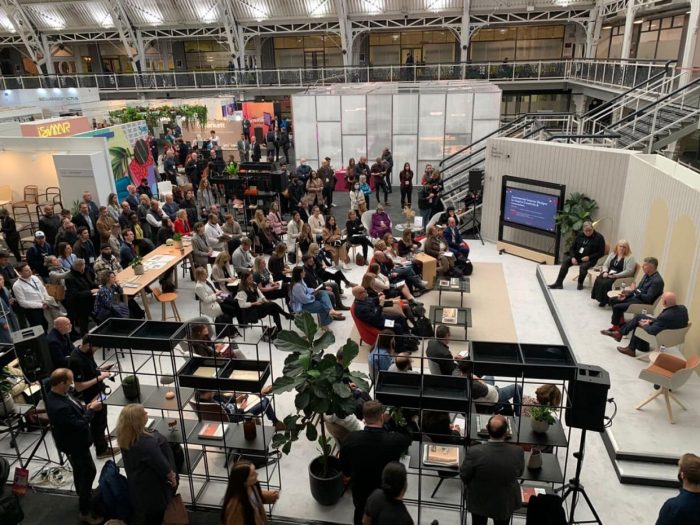
From the moment the doors opened at 9:30 on Friday morning the event was busy, with many visitors heading straight for the first talk of the day, Future of Work: Hybrid – A Passing Phase or Here to Stay? with Neil Usher, Chief Workplace and Change Strategist, GoSpace AI and Bertie Van Wyk, Workplace Specialist, Herman Miller. The talks space was expertly designed by The Furniture Practice creating a welcoming and comfortable space and every talk appeared to have standing room only with an engaged and enthusiastic audience.
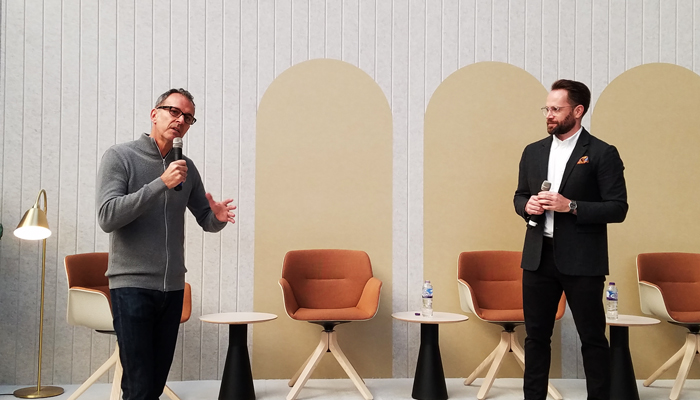
Neil and Bertie’s talk had a wonderful free-flowing conversational format and began by defining the difference between flexible (time based) and hybrid (location based) working. The two industry leading experts bounced pro’s and con’s of hybrid working back and forth.
Bertie spoke about how ‘flexibility and choice lead to increased active engagement whilst no choice and no variety creates disengagement.’ Although in agreement, Neil reminded the audience that ‘loss of structure impacts the neurodiverse needs of the team; there is a requirement to be sensitive to the anxieties and pressures that choice can generate.’
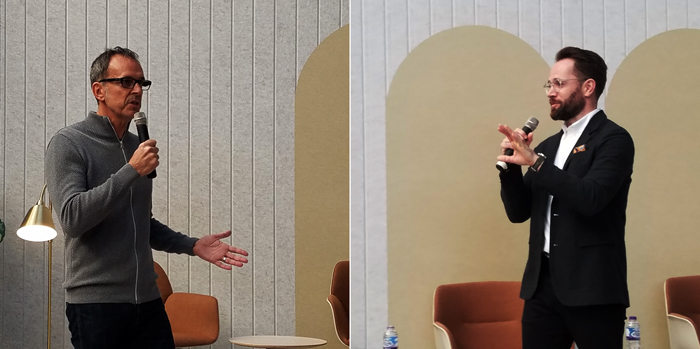
The sustainable impact of hybrid working was also touched upon. Despite an expectation that working from home would have a reduced environmental impact due to the reduction in commuting, in fact, the impact is increased through the energy used to heat and light each individual’s home whilst simultaneously heating and lighting an office space.
The engaged audience asked pertinent questions, maximising on the benefits of Neil’s and Bertie’s industry experience.
I was also privileged to listen the second talk of the day; Overcoming Obstacles to Sustainable Commercial Architecture. This panel discussion was lead by Isabelle Priest, Acting Managing Editor, RIBA Journal and welcomed Luke Tozer, Founder of Pitman Tozer Architects, Matthew Holloway, Principal at Grimshaw Architects and Richard Holland, Director at Holland Harvey Architects as speakers.
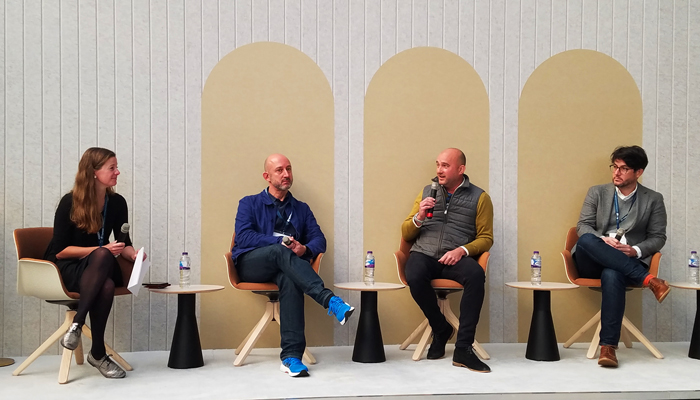
The panel touched on many of their own opinions and experiences including their thoughts on COP26 to how their own studios have adapted to the Covid crisis and addressed sustainability within their business practises. An extremely interesting concept raised by Matthew was how the demand for sustainability often comes from a tenant demanding standards which represent their brand and support their workers. Matthew felt that developers were taking this onboard and Luke supported this opinion explaining that when developers fail to achieve these standards they can often find themselves struggling to let their buildings and spaces.
I was reluctant to leave the talks arena but headed off to visit the stands. There were many interesting brands to meet including a good selection of European and international brands exhibiting in the UK for the first time. Attracting international brands is a fantastic marker that the UK continues to uphold it’s long established reputation as a world leader in design. I would have loved to have seen a greater selection of UK workplace brands at the show, along with a slightly wider breadth of product types including textiles.
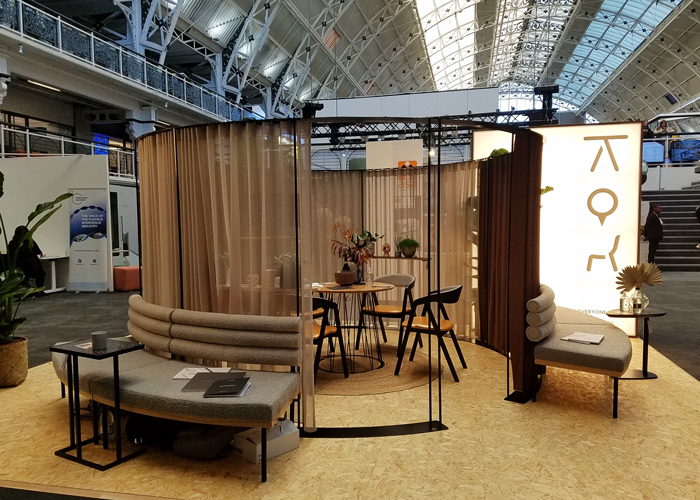
Table, Place, Chairs launched new seating and tables for their popular Circle of Life pod.
I was thrilled to find that so many of the exhibitors had chosen to use the event to launchpad for their new designs. Visit @designinsiderlive to see a wider selection of designs launched at the event.
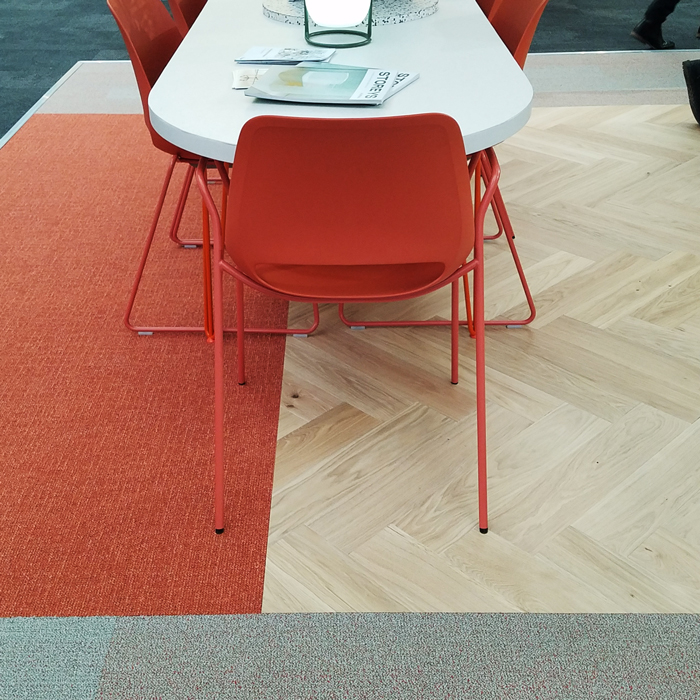
The Tarkett stand not only had wonderful coffee but also previewed their brand new Savera flooring. Savera utilises the brand’s Air Master and Eco Base technology and is available as a plank rather than a square tile.
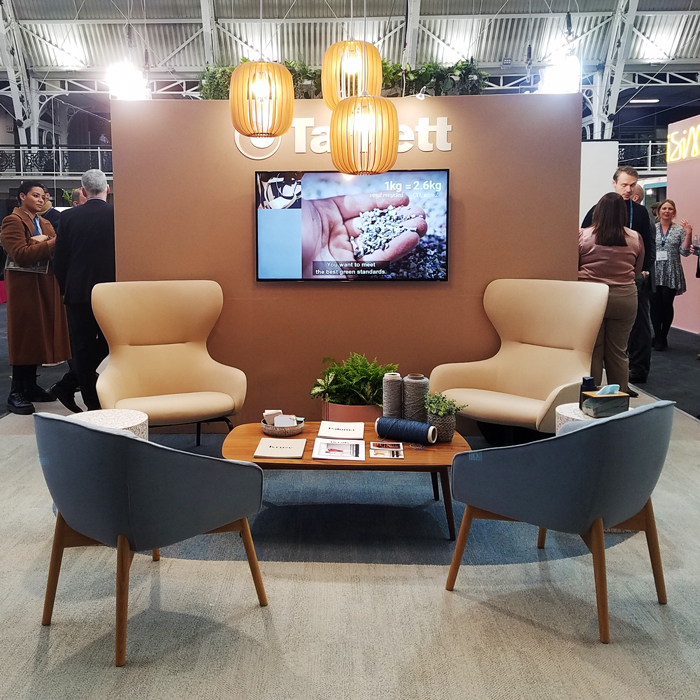
Tarkett also showcased Boss Design’s new Amelia chair, named after pioneering aviation heroine Amelia Earhart.
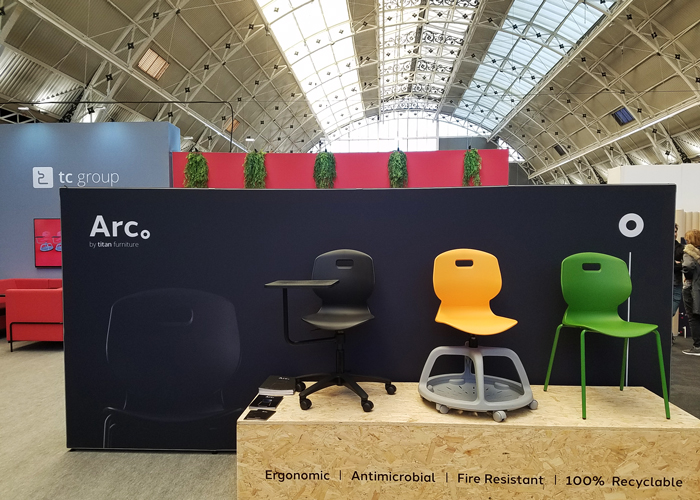
TC Group launched their Arc Chair for Titon Furniture, a colourful chair produced with antimicrobial materials which are 100% recyclable, aimed at the education and healthcare market.
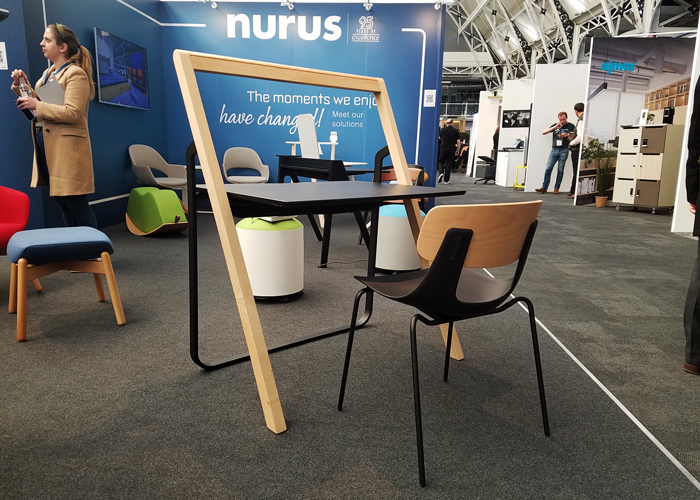
It was a pleasure to discuss Eva and Olo, two brand new workstations for both the home and office market, with Phidias Leonida, Director of One Dot Four, designed for Nurus.
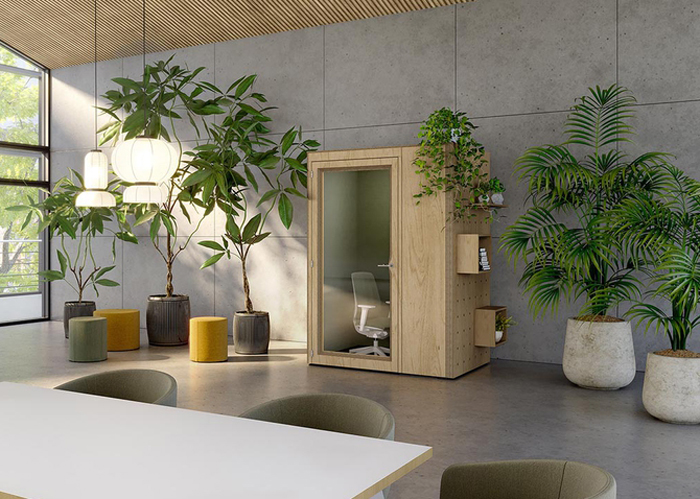
As anticipated there was no shortage of booths exhibited at the event but I particularly enjoyed the level of detail achieved by Spacestor in their Resistance Connect booth. A steel subframe is enveloped in plywood and once inside the user benefits from a fully adjustable worksurface with adjustable integrated ambient lighting designed specifically for video calls.
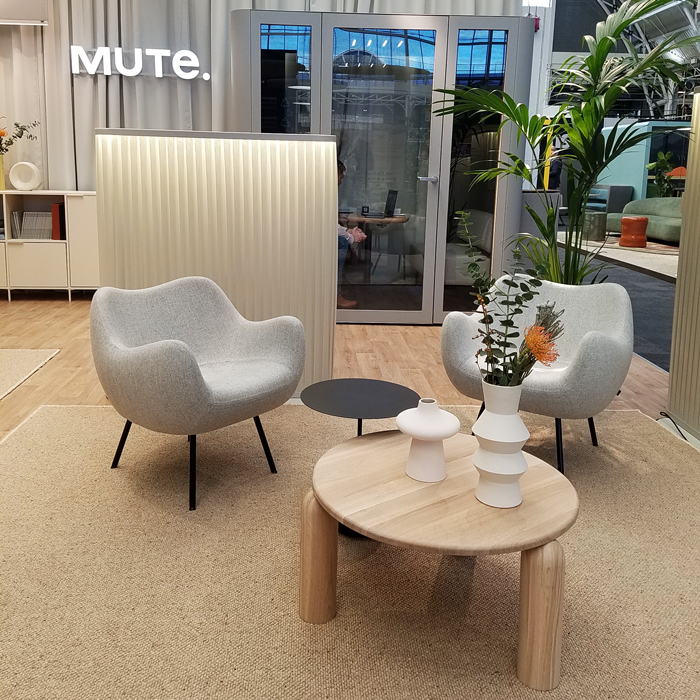
My new product highlight was the screen designed by Maja Ganszyniec ‘Mist’ for Mute. This sound insulating screen offered subtle design and attention to detail in a loud sector.
I am very much looking forward to the next Workspace Design Show on 27th & 28th February 2023 and although this event did not offer a new take on what an industry exhibition can offer it did expertly deliver exactly what the sector needed and was a joy to attend!






Comments